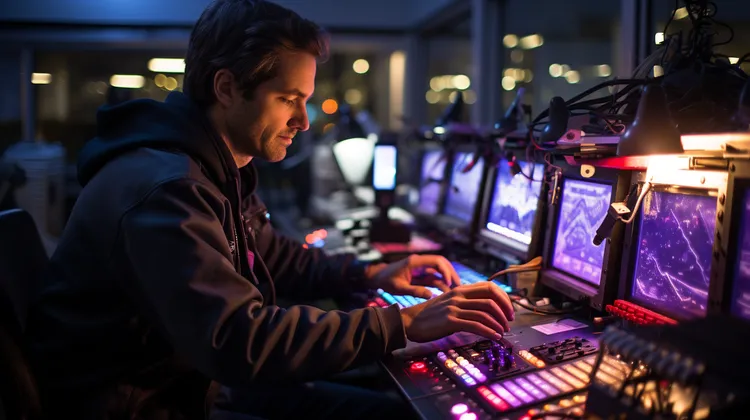
Sequencers: Air Traffic Control of Blockchains
In the realm of blockchain technology, sequencers are often overshadowed by their more commonly known counterparts like miners and validators. These seemingly unnoticed components play a crucial role in ensuring the order and consistency of transactions within a blockchain network. Comparatively, they can be thought of as the air traffic controllers of the blockchain world—ensuring that each transaction lands safely in its rightful place, making them a vital component of the blockchain ecosystem.
At their core, sequencers are responsible for organizing and ordering the transactions that occur within a blockchain. They maintain a record of the chronology of transactions and ensure that they are executed in the correct sequence. This process is essential to prevent double spending and to maintain the integrity of the blockchain network. Sequencers ensure that no two conflicting transactions go into the blockchain simultaneously, which would cause network inconsistencies and breakdowns.
To better understand the role of sequencers, let’s consider a simple analogy. Imagine a busy airport where numerous planes are landing and taking off at the same time. Without air traffic controllers guiding the planes, chaos would ensue, leading to crashes and confusion. Sequencers fulfill a similar role in blockchains, preventing transactions from crashing into one another and causing potential complications.
Sequencing algorithms employed by different blockchains can vary, but they typically rely on cryptographic mechanisms to establish a consistent and tamper-proof sequence. These algorithms are designed to protect the blockchain from malicious actors attempting to disrupt the order and legitimacy of transactions. By utilizing sophisticated cryptographic techniques, sequencers secure the blockchain network and ensure that transactions are executed reliably.
Despite their crucial role, sequencers often receive limited attention and are misunderstood by many. One reason for this could be the lack of visibility in the blockchain ecosystem. Miners and validators, who are more involved in the confirmation and processing of transactions, tend to hog the limelight, while sequencers operate quietly in the background, without much fanfare.
Another reason for their relative obscurity is the misconception that sequencers are part of the consensus mechanism within a blockchain network. While sequencers play a role in maintaining the order of transactions, they do not directly participate in the consensus process, unlike miners or validators. This separation of responsibilities often leads to confusing terminologies and misunderstandings among those less familiar with the intricacies of blockchain technology.
The confusion surrounding sequencers also stems from the dynamic nature of blockchain networks. The exact role of sequencers in different blockchains can vary based on the consensus algorithm employed. Some blockchains, like Ethereum, feature sequencers as part of their overall consensus mechanism, where they play a role in finalizing blocks. In contrast, others, like Bitcoin, separate the responsibilities of ordering transactions from consensus activities, handled by miners.
The prevailing misconception may also be attributed to the relatively newness of the blockchain technology and the pace at which it is evolving. As the field continues to grow, the understanding of sequencers and their significance will likely increase.
Sequencers are the unsung heroes of the blockchain ecosystem. They ensure that transactions are organized, ordered, and executed properly, serving as the air traffic controllers of the blockchain world. Although often misunderstood or overlooked, sequencers play a crucial role in maintaining the integrity and stability of blockchain networks. As more advancements are made in blockchain technology, it is essential to shed more light on the significance of sequencers, highlighting their contribution to the trust and security of decentralized systems.
2 thoughts on “Sequencers: Air Traffic Control of Blockchains”
Leave a Reply
You must be logged in to post a comment.
It’s fascinating to see how quickly the blockchain field is evolving. Can’t wait to see what advancements lie ahead for sequencers!
Sequencers think they’re important, but they’re really just background noise in the blockchain ecosystem.